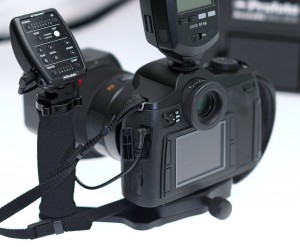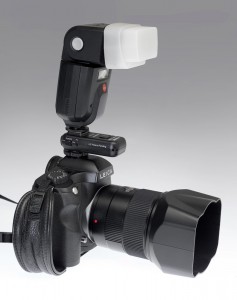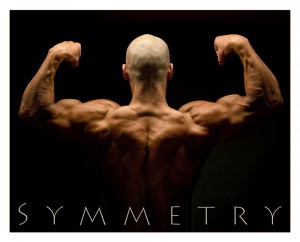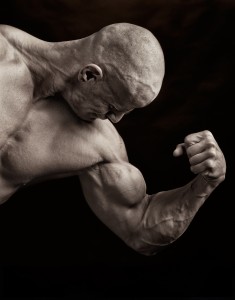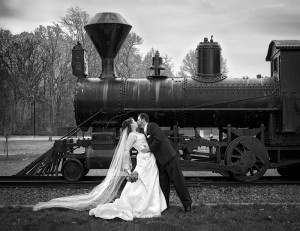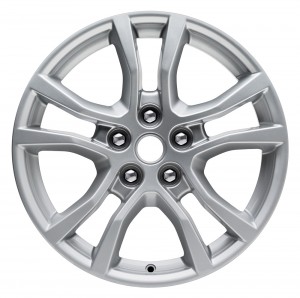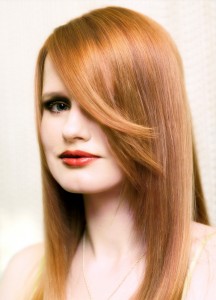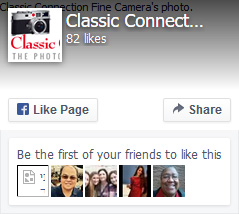 The Leica world anxiously waited forMay 10, 2012, expecting the announcement of a New Leica M10. To the disappointment of many, this item was missing from Leica’s New Item List. I guess we will all have to continue our wait. Maybe at Photokina in the fall we will finally hear and see this much anticipated camera, as well as a possible New S3, and a Leica SLR camera from Leica AG.
The Leica world anxiously waited forMay 10, 2012, expecting the announcement of a New Leica M10. To the disappointment of many, this item was missing from Leica’s New Item List. I guess we will all have to continue our wait. Maybe at Photokina in the fall we will finally hear and see this much anticipated camera, as well as a possible New S3, and a Leica SLR camera from Leica AG.
Meanwhile we can now list the NEW products that were unveiled yesterday:
- LEICA M MONOCHROM – a pure black & white Leica M
- LEICA APO-SUMMICRON-M 1:2/50 mm ASPH.Lens
- LEICA X2 – successor to the X1 with more megapixels
- LEICA V-LUX 40 – compact travel camera with GPS
- LEICA S Adapter for Hasselblad H lenses
- LEICA M9-PHermès limited editioncamera.
Leica M Monochrom – first full frame black and white digital camera!
“Countless iconic black-and-white photographs have been shot with the legendary cameras of the Leica M-System. So it was time for a camera to continue this tradition and finally make it possible to deliver authentic monochrome photography in digital form: the Leica M Monochrom. It is the first full-frame, 35 mm format digital camera to be designed exclusively and without any compromises for black-and-white photography.It delivers ‘true’ black-and-white images in unrivalled sharpness and dynamic range. This makes the M Monochrom the perfect camera for anyone with a passion for black-and-white photography.”
Leica introduce the world’s first full frame black and white digital camera, the Leica M Monochrom. Featuring a black and white sensor, the camera produces images in a sharpness and brilliance never before attained and barely distinguishable from other M cameras with the model name discretely engraved on the hot shoe. The Leica M Monochrom will be available in North America from August 2012.

| Cat. # | Description | UPC |
| 10760 | Leica M Monochrom | 799429107604 |
| 14399 | Handgrip for M Monochrom | 799429143992 |
The Leica M Monochrom features the following:
- Newly developed monochrome CCD sensor with a native resolution of 18 million pixels
- 100% sharper imaging thanks to direct processing of raw data with no interpolation
- Extremely low, fine-grain image noise up to ISO 10,000
- Raw data histogram and parameter clipping warning
- Various tones programmable
- Top cover and bottom plate in black chrome finish
- New leatherette body covering
- All-cowhide carrying strap
- Nik Silver Efex Pro 2 software supplied in addition to Adobe Photoshop Lightroom
- Exclusive access to the Leica Monochrom Print Service in cooperation with Whitewall
- Original fiber barite print of a Magnum photo from the Leica M Monochrom campaign by J.A. Sobol supplied
The Key Features in Detail:
Newly developed monochrome CCD sensor with a native resolution of 18 Million Pixel.
With its full, native resolution of 18 megapixels, the Leica M Monochrom delivers 100 % sharper images than with color sensors. The fact that its sensor does not “see” color means real brightness values are available for each individual pixel. That is to say, the sensor of the M Monochrom produces a “genuine” black-and-white image directly. In combination with the brilliant imaging performance of Leica lenses and the perfect matching of the sensor to the M system, this creates pictures of outstanding sharpness and natural brilliance, with no need to sharpen the image in post-processing. The result is incomparable picture quality, such as would normally only be expected of a medium-format camera. The impressively low noise level of the monochrome CCD sensor delivers an extremely fine-grained image, which is not perceived as disturbing even at the highest ISO settings.
Raw data histogram and parameter clipping warning
The Leica M Monochrom impresses discerning users and fine-art photographers with a raw data histogram for exact control of tonal values. In contrast to standard histograms, it depicts the actual raw data, unprocessed and uncorrupted. Especially in combination with the parameter clipping view, this enables exposures to be optimized with great precision in order to fully exploit the available dynamic range.
Tones
Whether sepia, cool or selenium – with the M Monochrom images can be adjusted to the
characteristic tones of analog black-and-white photography at the press of a button.
Design
The classic, iconic Leica M camera design is embodied in the Leica M Monochrom. The mat black chrome-finish top cover imbues the camera with the look of a discrete, unassuming instrument.
Only an engraving on the black accessory shoe reveals the product’s name.
The camera features an extremely soft, tactile leatherette body covering which is perfectly in
keeping with the discrete overall look.
The camera comes with a real-leather carrying strap made of high-grade cowhide.
Additionally there is a new handgrip available, featured with the same black chrome finish and the same leather trim as the camera.
Silver Efex Pro included
A full version of the world’s leading black-and-white image processing software, Silver Efex Pro 2, is supplied. Silver Efex Pro 2 incorporates a unique and powerful set of darkroom-inspired tools to produce top-quality black-and-white pictures. Silver Efex Pro 2 emulates over 20 different black and white film types to recreate the classic monochrome look of film. The emulation is based on detailed analysis of multiple rolls of each film type. This results in accurate reproductions of popular film from ISO 32 to ISO 3200.
Leica Monochrom prints
For passionate black-and-white photographers looking to retain the accustomed brilliance and
Quality of their images in print, Leica offers a unique service. In cooperation with the photo Processing lab Whitewall, the Leica Monochrom Print Service enables M Monochrom customers to obtain superb black-and-white prints of their work. This involves developing the digital images from the Leica M Monochrom on genuine fiber barite photographic paper. Thanks to use of the classic wet-chemistry silver process, the developed prints are indistinguishable from hand-made prints of analog images. Customers looking to utilize this exclusive service can order prints directly from Whitewall after registering their M Monochrom. This service is initially only available to Leica M Monochrom customers.
Technical Data – Leica M Monochrom (Cat. # 10760)
Camera type: Compact digital rangefinder system camera with black-and-white sensor
Lens attachment: Leica M bayonet with additional sensor for 6-bit coding.
Lens system: Leica M lenses from 16 to 135 mm.
Image sensor: Active area approx. 23.9 x 35.8 mm, 5212 x 3468 pixels (18 megapixels). Infrared filter for non-visible spectrum over 700nm, no low-pass filter
Resolution: Adjustable, DNG™: 5212 x 3468 (18 megapixels), JPEG: 5216 x 3472 (18 megapixels), 3840 x 2592 (10 megapixels), 2592 x 1728
(4.5 megapixels), 1728 x 1152 (2 megapixels), 1280 x 864 (1 megapixel).
Data formats: DNG™ (raw data), uncompressed, JPEG with quality-oriented compression
File size: DNG™: 18 MB (compressed), 36 MB (uncompressed), JPEG: approx. 2–10 MB.
Color spaces: sRGB preset
Storage medium: SD cards up to 2 GB, SDHC cards up to 32 GB.
Menu languages: German, English, French, Spanish, Italian, Japanese, Traditional Chinese, Simplified Chinese, Russian.
Exposure metering: Through the Lens (TTL) metering, center-weighted with variable aperture.Center-weighted TTL metering for flash exposure with system-conformant SCA-3000/2 standard flash units.
Metering range: With aperture 1.0 / ISO 320/26°: EV 1 to 21
Flashing of the left-hand triangular LED in the viewfinder indicates that the brightness reflected is below the metering range.
Sensitivity range: ISO 320/26° to ISO 10000/41°, adjustable in 1/3-ISO stages, with automatic timer (A) and manual exposure setting, optionally automatic control or manual adjustment. ISO 160 additionally available as pull function.
Exposure mode: Automatic timer (A) / Manual (M)
Flash exposure control
Flash unit attachment: Via accessory shoe with center and control contacts.
Synchronization: Optionally triggered at the first or second shutter curtain.
Flash sync time: = 1/180 s; slower shutter speeds usable.
Flash exposure metering: Control with center-weighted TTL pre-flash metering (with SCA-3501/3502 adapter, or SCA-3000 standard flash unit such as Leica SF 24D/Leica SF 58).
Flash measurement cell: Two silicon photo diodes with collection lens on the camera bottom.
Flash exposure
Compensation: ±3 1/3-EV in 1/3-EV stages adjustable at SCA-3501/3502 adapter. On the Leica SF 24D with computer control it is possible to program ±3 EV in 1/3-EV stages, or from 0 to -3 EV in 1-EV stages; on the Leica SF 58 ±3 EV can be programmed in 1/3-EV stages in all modes.
Displays in flash mode: Ready: By the flash symbol LED in the viewfinder being constantly lit; confirmation of success: By the LED remaining lit or flashing rapidly for a while after taking the picture; underexposure display by the LED going out for a while.
Viewfinder
Viewfinder principle: Large, light bright-line rangefinder with automatic parallax compensation.
Eyepiece: Adjusted to -0.5 dpt. Corrective lenses from -3 to +3 dpt. available.
Image field limiter: By activating two bright lines each: For 35 and 135 mm, for 28 and 90 mm or for 50 and 75 mm. Automatic activation when lens is screwed in. Any desired pair of bright-line frames can be activated using the image field selector.
Parallax compensation: The horizontal and vertical difference between the viewfinder and the lens is automatically compensated according to the relevant distance setting, i.e. the viewfinder bright-line automatically aligns with the subject detail recorded by the lens.
Matching viewfinder &
actual image: The bright-line frame size at a range setting of 1 metre corresponds exactly to the sensor size of approximately 23.9 35.8 mm. At an infinity setting, depending on the focal length
the sensor captures more than the relevant bright-line frame shows and, conversely, at ranges below 1 metre somewhat less.
Magnification: (With all lenses) 0.68 times.
Large-basis Rangefinder: Split or superimposed image range finder shown as a bright field in the center of the viewfinder image.
Effective metering basis: 47.1 mm (mechanical metering basis 69.25 mm x viewfinder magnification 0.68 times).
Displays
In the viewfinder: LED symbol for flash status (at bottom). Four-digit seven-segment LED digital display, brightness adapted to ambient conditions, for: Warning in case of exposure correction; display of automatic shutter speed in automatic mode; advisory indicating use of metering memory lock LED exposure monitor with two triangular and one central circular LED with manual exposure setting.
On back: 2.5″ monitor (color TFT LCD) with 230,000 pixels;
Shutter/releases
Shutter: Microprocessor-controlled, ultra-quiet metal leaf slotted shutter with vertical movement.
Shutter speeds: In automatic mode (A) steplessly from 32 s to 1/4000 s. Using manual setting 8 s to 1/4000 s in half steps, B for long exposures up to max. 240 s 1/180 s fastest shutter speed for flash synchronization.
Series exposures: Approx. 2 pictures/s, ≤ 8 pictures in series.
Shutter release: Three-stage: Exposure metering on – Metering memory lock (in aperture priority mode) – Shutter release. Integrated standard cable release thread.
Self-timer: Delay optionally 2 (aperture priority and manual exposure setting) or 12 s (menu setting), indicated by flashing LED on front of camera and corresponding display on the monitor.
Turning the camera on/off: By main switch on camera cap; optionally automatic shutdown of camera electronics after approx. 2/5/10 minutes; reactivated by tapping the shutter release.
Power supply: One lithium-ion rechargeable battery, rated voltage 3.7 V, capacity 1900 mAh. Capacity display in monitor; with shutter held open (for sensor cleaning) additional acoustic warning of low capacity.
Charger Inputs: 100-240 V AC, 50/60 Hz, automatic switching, or 12/24V DC; Output: 4.2 V DC, 800 mA.
Camera housing material: All-metal case made of die-cast magnesium; synthetic leather covering. Cap and base plate made of brass, black chrome finish, sapphire glass monitor cover.
Tripod thread: A 1/4 (1/4″) DIN made of stainless steel in base plate.
Operating conditions: 0 to +40 °C.
Interface: 5-pin mini-USB 2.0 High-Speed port for fast data transfer.
Dimensions (W x D x H): Approx. 139 x 37 x 80 mm (5.5” x 1.5” x 3.2”)
Weight (with battery): 600 g. (1.32 lbs.)
Software licenses
Supplied: Adobe Lightroom, Nik Silver Efex Pro, as download versions (high-speed internet connection required)
Compatibility: Windows® 7 SP1, Windows® Vista® SP2, Windows XP SP2, Mac® OS X 10.6.8 (Snow Leopard) or higher.
Package contents 100 – 240 V charger with two power cables (EU, USA; some export markets differ) and one vehicle charging cable; lithium-ion battery; USB cable; real-leather carrying strap; original Leica Monochrom print of a campaign motif; user manual; information material for
NEW Leica APO-Summicron-M 50mm/f2 ASPH lens
Leica Camera is pleased to introduce the LEICA APO-Summicron-M 50mm/f2 ASPH lens to our M-System. With this new lens, Leica engineers have pushed the boundaries of what is technically feasible to set a new benchmark in imaging. The new lens will be available from August 2012.

The LEICA APO-Summicron-M 50mm/f2 ASPH will offer photographers the following advantages:
- High speed standard lens delivering outstanding imaging performance
- Supremely soft rendering of blurred image areas (Bokeh)
- Integrated lens hood, extendable by rotating
- Product package includes milled brass lens front cap
- Exclusive presentation packaging box
The LEICA APO-Summicron-M 50 mm/f2 ASPH was designed like all Leica lenses with the aim of maximizing both contrast and detail even at full aperture. That aim is met in an incomparable manner. The latest milestone in the history of the M-system delivers previously unattained performance levels in terms of all technical parameters. The MTF curves, which describe the sharpness of the image, remain all the way to the edges, even with the aperture open, over 50% contrast. This level of performance has never been achieved previously and demonstrates the exceptional quality of the lens. This allows extremely sharp imaging in all scenarios, with optimal definition right into the corners, even for close-ups.
This lens has an apochromatic correction feature which is a highly complex and sophisticated method of color error correction. It minimizes color fringing at sharp edges, so ensuring that all details are naturally depicted. This is achieved, among other means, by skilfully integrating glasses with anomalous partial dispersion into the lens design. All these qualities allow photographers to get the best possible image quality, especially for large prints.
The Leica APO-Summicron-M 50 mm/f2 ASPH particularly in combination with high-resolution cameras such as the new Leica M Monochrom will offer photographers the opportunity to produce fine-art photography of a quality never before attained.
Please forward the information to your dealers. If you have any questions, please do not hesitate to contact us.
Thank you.
Technical Data : Leica APO-Summicron-M 50 mm / f2 ASPH
| Angle of View (Diagonal / Horizontal / Vertical) | 47° / 40° / 27° |
| Optical design | Number of lenses / groups 8 / 5 Position of entrance pupil from to bayonet flange 24.4 mm (approx. 1 inch) |
| Focussing | Working range 0.7 m to infinity (approx. 28 inches to infinity) Scales – combined feet / meter graduation Smallest object field – approx. 271 mm x 407 mm Largest reproduction ration – 1 : 11.3 |
| Aperture | Setting / Mode of operation – Preselection with click-stops, half steps available Lowest value – 16 |
| Lens mount | Leica M quick-cahnge bayonet |
| Filter mount | Female thread fro screw-on filter E39 |
| Lens hood | Built-in, extendable by rotating |
| Dimensions and weight | Length – approx 47 mm (approx. 1.9“) Largest diameter – approx 53 mm (approx. 2.1“) Weight – approx 300 g (approx. 10.6 oz.) |
| Package contents | Lens, fron lens cap (metal), rear lens cap, leather case, E39 lens cap, presentation box |
LEICA X2
Leica Camera is pleased to introduce the Leica X2, featuring the latest sensor technology in combination with the fast 35mm Leica Elmarit lens. Available in black and silver, the X2 which is made in Germany will be available in North America at the end of May 2012.

The Leica X2 offers the following:
- Newly developed APS-C CMOS Sensor with an effective resolution of 16.1 MP
- Leica Elmarit 1;2.8/24 mm ASPH (35 mm equivalent: 35 mm)
- Simple operation and manual adjustment possibilities
- High quality materials
- Connection for high resolution electronic viewfinder for new photographic perspectives
- Adobe Photoshop Lightroom, the comprehensive solution for modern digital photography
- Made in Germany
IMPORTANT FEATURES OF THE LEICA X2
New developed APS-C CMOS Sensor with an effective Resolution of 16.1 Mega-Pixel
The CMOS image sensor of the Leica X2 in APS-C format is unusually large for such a compact camera. The result: extremely low image noise, high dynamic range, and accurate color differentiation. The combination of an exceedingly large sensor and high-performance lens sets new standards in image quality in the compact camera category. And this is where the Leica X2 shows its true greatness.
Classic Focal Length: Leica Elmarit 1:2.8/24 mm ASPH (35mm equivalent)
Countless iconic images in the history or photography were shot with a focal length of 35 mm – the classic lens for photojournalism. The Leica Elmarit 24 mm/f2.8 ASPH lens is equivalent to this famous focal length in 35 mm film format, with its superb optical performance opens up a broad vista of potential uses.
Precise Auto Focus
The Leica X2’S fast, new autofocus feature enables extremely precise and virtually silent focusing. Perfect for situations where spontaneous reactions are essential to capture the right moment. It adapts flexibly to the situation in hand, for example, with a choice AF focusing segments or face recognition. This allows the photographer to concentrate exclusively on their subject.
Design
The design of the Leica X2 also expresses Leica’s commitment to the essentials, thanks to its compact size and classic finish. Reminiscent of the traditional Leica M-Design, the X2 becomes an instant love affair – not just down to its captivating looks, but also the wonderful feel in your hands. Once held, even for a moment, it becomes difficult to put down. The camera’s robustly-engineered, full-metal chassis is reassuringly solid, while its leather trim is comfortable to the touch and provides a perfect grip. The superior finish, using the most premium materials, makes the Leica X2 a true pleasure to hold, but its ultimate qualities are revealed when the photographer is shooting.
Most Simple Control
For simple snapshots or painstakingly arranged compositions – the Leica X2 is the ideal camera for anyone with a passion for photography in its purest form. That’s because it enables split-second changes between automatic and manual control. The robust dials on the top plate allow easy setting of the shutter speed and aperture. Moreover, changing the plane of focus, adjusting white balance, and other imaging parameters, allows photographers to consciously influence the look or mood of their images. In live view mode, the generously-sized, high-contrast 2.7“LCD screen offers photographers constant control and a clear and detailed view, even in bright conditions.
Differences between the Leica X2 and Leica X1
- Newly developed sensor which provides high image quality especially at low light and optimized auto focus speed.
- Connection for high resolution electronic viewfinder.
- New touch and feel of the operating elements, new leather trim and surfaces.
- New pop-up flash with latch trip.
- Adobe Photoshop Lightroom, latest version.
Leica S-Adapter H
Leica Camera is pleased to introduce the Leica S-Adapter H. This adapter will allow S2 customers to use the Hasselblad H-System lenses with the S2 or S2-P. The Leica S-Adapter H will be available in North America from late May.

| Cat # | Description | UPC | MSRP |
| 016-030 | Leica S-Adapter H | 799429160302 | $1,950.00 |
The Leica S-Adapter H will allow the Hasselblad H-lenses the following functions:
- Autofocus and manual focusing with focus indication
- Automatic diaphragm
- Central shutter upto 1/750s
The Leica S-Adapter H will allow Hasselblad lenses to have an extended scope of application with the S-camera due to the integrated focal plane shutter of the camera body. This will allow the photographer to shoot with the Hasselblad lenses, as well as, with central shutter or without central shutter by using upto 1/4000s with the focal plane shutter of the camera.
The Leica S-Adapter H supports the following H-system lenses:
- HCD 4 / 28 mm
- HC 3.5 / 35 mm
- HC 3.5 / 50 mm II
- HC 2.8 / 80 mm
- HC 2.2 / 100 mm
- HC macro 4 / 120 mm II
- HC 3.2 / 150 mm
- HC 4 / 210 mm
- HC 4.5 / 300 mm
- HCD 4-5.6 / 35 – 90 mm
- HC 3.5-4.5 / 50 – 110 mm
The Leica S-Adapter H does not support the following components: HTS 1.5 Tilt/Shift
Leica V-LUX 40
Leica Camera is pleased to introduce the 14.1 MP Leica V-LUX 40 to our fine range of compact digital cameras. Boasting a high-performance 20X super-zoom lens with focal length range of 24 to 480 mm, the Leica V-LUX 40 is ideal for almost any photographic situation. The Leica V-LUX 40 will be available in North America from mid-May 2012.

LEICA V-LUX 40
- Leica DC-Vario-Elmar 4.3 – 86 mm / f 3.3 – 6.4 ASPH ( 24 – 480 mm equivalent) zoom lens
- Newly developed 14.1 MP 1 / 2.23“ CMOS sensor
- Simple and intuitive handling, plus manual setting options for more ambitious users
- Fast burst shooting and 3-D photo feature
- 3“ touch screen display with a resolution of 460, 000 pixels
- 1080 p-AVCHD full HD video and internet friendly MP4 storage forma
- GPS module for the registration of geographical data for the lcoation of every shot including detailed maps on separate DVD
- Adobe Photoshop Elements 10 and Premiere Elements 10 – the software package for image an video processing, archiving and display.
Leica DC-VarioElmar 4.3 – 86 mm / 3.3 – 6.4 ASPH (24 – 480 mm equivalent)
The new Leica DC Vario-Elmar lens with an enormous focal length of 24 mm super wide angle to 480 mm super tele zoom for photo and video, the V-LUX 40 is prepared for nearly all photographic situations. High precision aspherical elements and an optical image stabilizer are incorporated to guarantee outstanding imaging performance.
Newly developed CMOS Image Sensor with an effective resolution of 14.1 MP
The new 1 / 2.33“ CMOS image sensor in the Leica V-LUX 40 captures 15.3 megapixels (14.1 MP effective) to ensure excellent picture quality. It enables a higher dynamic range as well as particularly noise-free images at sensitivities up to ISO 3200. In comparison with its predecessor, the Leica V-LUX 40 now offers significantly improved image quality, even in low light conditions. In addition to this, its autofocus speed of 0.1 seconds allows even faster focusing on moving subjects.
High Versatility
When it comes to the range of functions, the features of the Leica V-LUX 40 leave nothing to be desired: from a continuous shooting rate of 10 fps at full resolution, and even 60 fps in high-speed mode, to creative modes with effects like miniature world, panorama, and retro. The Leica V-lux 40 offers additional functions for in-camera processing, and the camera is supplied complete with a software package comprising Adobe Photoshop Elements 10 and Adobe Premiere Elements 10 for post-processing still pictures and video. For even more flexibility, the camera battery can now be recharged from a PC or laptop via the USB connector, or with an AC power adapter.
This high level of handling convenience is further highlighted by its impressive 3“ LCD touch-screen display. Its integrated GPS module also makes the V-LUX 40 the ideal camera for travelling. It not only registers the location and time in the Exif data of each image file, but also shows any major sights that are located in the surrounding area. The DVD included in the package contains maps of important cities and regions. These can be transfered to an SD card an uploaded to the camera as an aid to orientation in unfamiliar surroundings. Thumbnails of images can also be added to the maps.
Videos in full HD-quality
Full-HD videos capturedby the V-LUX 40 impress with their perfect rendition of the finest details, even with fast-moving subjects. This is made possible by recording in AVCHD format at 1920 x 1080 pixel resolution and 50 full frames per second. Another new feature is that videos can now be saved in Internet-friendly MP4 format and be uploaded directly to social media or mobile devices, for example, without any need for conversion. Outstanding audio quality is ensured by an integrated stereo microphone with a built-in wind-noise filter.
Differences between the V-LUX 40 and its predecessor, V-LUX 30
- Newly developed lens – wider zoom range from 24 mm – 480 mm (20x)
- Newly developed CMOS sensor – Better picture quality even in low light condition
- Increased AF speed with 0.1 seconds
- Videos in 1080P (progressive) format for improved video quality and internet friendly MP4 storage format
- GPS including separae DVD with detailed maps
- Adobe Photoshop Elements 10 and Premiere Elements 10
LEICA Hermès limited edition
Luxurious leather by Hermès
The special limited edition Leica M9-P ‘Edition Hermès’ is extraordinary in every respect. The highlight is its ‘Veau Swift’ calfskin in ocre, supplied by Hermès for the leather finish of the Leica M9-P camera. This exclusive leather trim by Hermès determines the colour concept of the special edition and ensures a perfect tactile sensation. The fine and supple leather is applied not only to the camera body, but is also used for the shoulder strap included in the set.

Unmistakeable design
In collaboration with automotive designer Walter de’Silva, selected features of the camera body were restyled, including the top and base plates, the shutter speed dial, the multifunction wheel and the shutter release. In addition, the frame selector lever, the accessory shoe and the Leica script on the upper face of the top plate have also been omitted to further emphasise the unique status of this limited edition. The camera is finished in silver chrome and its lens in anodised silver. In another true master stroke of the Leica factory, the two finishes are absolutely indistinguishable. All protective caps are also manufactured completely in metal.
AVAILABLE IN A CHOICE OF TWO DIFFERENT SETS:

Available Now:
The Leica M9-P ‘Edition Hermès’ – Set 1
This first of the two Leica M9-P ‘Edition Hermès’ sets is available from today, in a worldwide limited edition of 300. In addition to the camera, the set includes a silver anodised Leica Summilux-M 50 mm f/1.4 ASPH. lens.

From June 2012:
The Leica M9-P ‘Edition Hermès’ – Set 2
The Leica M9-P ‘Edition Hermès’ – SérieLimitée Jean-Louis Dumas, in a strictly limited edition of only 100 sets worldwide, is a memorial to the friendship between the former president of Hermès, Jean-Louis Dumas, and Leica. The camera in this set is accompanied by three lenses: a Leica Summicron-M 28 mm f/2 ASPH., a Leica Noctilux-M 50 mm f/0.95 ASPH. and a Leica APO-Summicron-M 90 mm f/2 ASPH., all featuring a stunning silver-anodised finish. This unique collection of photgraphic equipment finds a fitting home in a hand-crafted Hermès camera bag that is available exclusively as part of this second set. As an homage to Jean-Louis Dumas, the second set also includes a book with a selection of his pictures. This photographic work in two volumes shows an entertainingly diverse portfolio of 200 black-and-white images captured by Jean-Louis Dumas with his Leica M-camera.









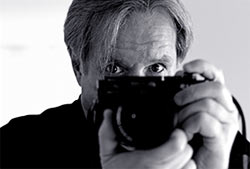 Previous entry regarding the influence of technology on modern photographic art spurred on a fair amount of discussion when linked to one of my favorite forum sites … GetDpi. Many thanks to those who participated.
Previous entry regarding the influence of technology on modern photographic art spurred on a fair amount of discussion when linked to one of my favorite forum sites … GetDpi. Many thanks to those who participated.
